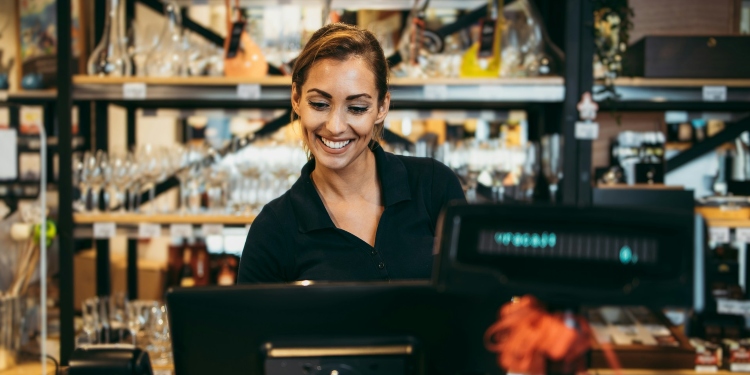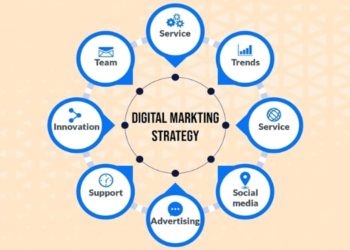Businesses across the county face strong competition from retail parks, e-commerce, and changing consumer habits. By combining traditional street-level tactics with search engine optimisation Essex companies can turn online attention into real-world visits. The following ideas expand on common best practices, keeping instructions clear and beginner-friendly while avoiding jargon.
1. Build and Maintain a Complete Google Business Profile
A Google Business Profile appears whenever a customer searches for the company name or product. To maximise its impact, the profile should include:
- Accurate opening hours, including bank-holiday variations.
- At least five high-quality photos – one exterior, one interior, and three product or service shots.
- A concise description explaining what makes the offer special in fewer than 250 characters.
- Quick replies to every new review within forty-eight hours.
These simple actions raise trust and improve map visibility, which can translate directly into increased footfall.
2. Refresh Window Displays Every Fortnight
Passers-by often decide to enter within three seconds of glancing at the frontage. A clear, well-lit display removes hesitation. Beginners can adopt a fortnightly rhythm:
- Select one central theme – seasonal products, a popular service, or a local event.
- Use a single focal item at eye level with a price tag large enough to read from two metres away.
- Add soft lighting after dusk so the display remains inviting during evening hours.
Consistency in colours and fonts reinforces brand recognition without additional cost.
3. Host Micro-Events That Last Under One Hour
Short demonstrations create urgency without overwhelming staff:
- A cookshop might arrange a thirty-minute knife-sharpening lesson at 11 am on Saturday.
- A pet-supply store could invite a local trainer for a quick “sit-stay” workshop.
- A bookshop might schedule a “speed-review” circle where attendees share recent reads.
Posting date and time on community Facebook groups and parish-council noticeboards usually attracts an audience at minimal expense.
4. Offer Click-and-Collect With an Immediate Perk
Click-and-collect merges online convenience with in-store browsing. When the customer arrives, staff can hand over a loyalty card stamped once automatically or offer a five-per-cent discount on any additional purchase made that day. This straightforward incentive turns a single transaction into a potential upsell.
5. Add a Simple Loyalty and Referral Scheme
A paper stamp card remains effective because it requires no technical setup. Basic structure:
- Ten stamps equal one free item valued under five pounds.
- Bringing a friend for the first time earns both guests an extra stamp.
Place the card on the counter so every customer sees it during checkout.
6. Collaborate With Immediate Neighbours
Joint promotions reduce workload and broaden appeal. For example:
- Three cafés and two boutiques on the same street create a “High Street Passport”. Shoppers collect one sticker from each venue to enter a monthly draw.
- Restaurants and a nearby theatre print a shared early-evening menu flyer to encourage diners before performances.
Shared marketing spreads risk and encourages customers to visit multiple premises in a single trip.
7. List Accurate Wayfinding and Parking Details Everywhere
Uncertainty about travel deters first-time visitors. Each online touchpoint – the website, social profiles, and confirmation emails – should include:
- A concise map snippet.
- Bus routes or rail station distances in minutes on foot.
- The nearest car park name plus the current hourly rate.
Removing logistical doubts makes a physical visit feel effortless.
8. Leverage Local Social-Media Features
Location stickers on Instagram Stories or local hashtags such as #Chelmsford or #SouthendOnSea help content appear in area-specific feeds. A basic weekly routine might include:
- Monday: behind-the-scenes Story set to “Chelmsford, Essex” location tag.
- Wednesday: quick product video using #EssexMums or another niche community tag.
- Friday: poll asking followers which weekend promotion they prefer.
Prompt replies to every comment within one hour keep the algorithm and real-world customers engaged.
9. Create a Seasonal Door-Step Experience
Changes visible from the pavement act as mini-events:
- Set up a small table with samples outside on sunny days.
- Use a bubble machine for a children’s shop during school holidays.
- Add a hot-drink dispenser for winter late-night shopping evenings.
Each gesture signals activity and draws curiosity, persuading passers-by to cross the threshold.
10. Encourage User-Generated Content With a Photo Corner
A dedicated photo spot inside the premises – perhaps a branded backdrop or quirky prop – prompts visitors to share images online:
- Position good lighting so phones capture bright, flattering results.
- Add a small sign that invites tagging the store’s handle.
Every tagged post acts as free advertising to the visitor’s local network.
11. Distribute Printed Mini-Guides Featuring Nearby Attractions
A one-page fold-out map showing local points of interest positions the shop as a helpful community hub. Contents can include:
- Walking route from the train station.
- Recommended independent cafés.
- Public-toilet locations and cash machines.
Customers take the guide away, extending brand presence beyond the visit.
12. Participate in County-Level Campaigns and Awards
Essex County Council and local chambers often run “shop local” weeks or small-business awards. Joining these initiatives provides free press mentions and places the business in curated directories read by residents seeking new venues.
13. Use Simple In-Store Tech to Gather Contact Details
A tablet on the counter asking visitors to join a monthly newsletter – perhaps linked to a prize draw – creates a first-party marketing list. Beginners can use free email-service templates to send:
- Seasonal opening-hour reminders.
- Early notice of new product launches.
- Exclusive voucher codes redeemable only in person.
Regular communication nudges subscribers to return, especially when limited-time offers are highlighted.
14. Track Footfall With Easy Methods and Adjust
Monitoring does not require expensive equipment. A notepad by the till where staff mark tally lines every time a customer enters during each hour of the day quickly reveals peak periods. After four weeks:
- Extend opening hours if early evening proves busier than expected.
- Test moving micro-events into quieter slots to balance traffic.
Data-led tweaks prevent wasted effort and focus resources where gains are measurable.
15. Support Local Causes to Strengthen Community Ties
Sponsoring a youth-sports team kit or providing refreshments for a charity fun-run embeds the business in community life. Displays of the partnership – such as a framed team photo – build goodwill that often translates into loyalty and recommendations.
Final Thoughts
None of these tactics requires large budgets or advanced knowledge. By adopting a steady cycle – plan one new initiative, measure results, and refine – the average Essex business can gradually raise visibility and welcome more customers. Combining street-level engagement with consistent online presence lays a solid foundation for sustainable footfall growth.
David Prior
David Prior is the editor of Today News, responsible for the overall editorial strategy. He is an NCTJ-qualified journalist with over 20 years’ experience, and is also editor of the award-winning hyperlocal news title Altrincham Today. His LinkedIn profile is here.











































































